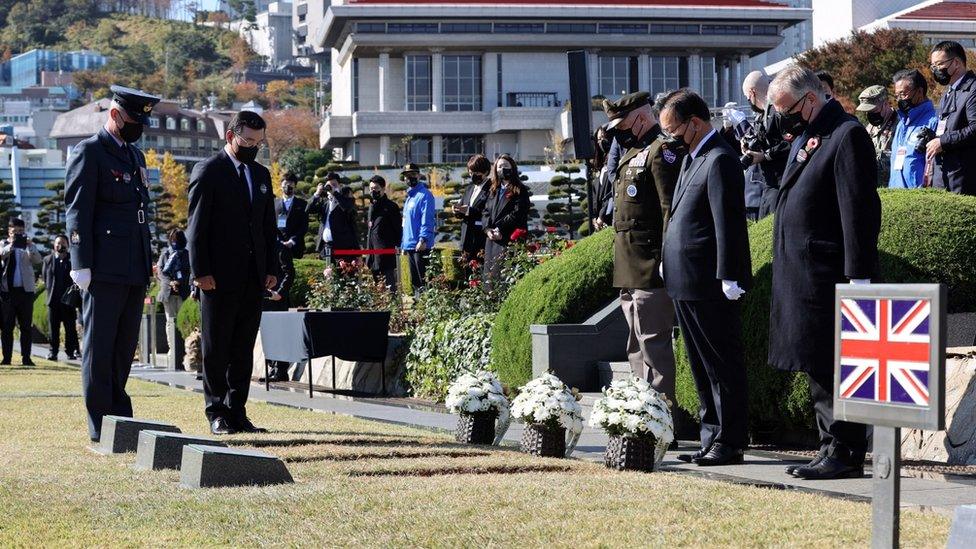Family of unknown WW1 Worcestershire soldier traced
- Published
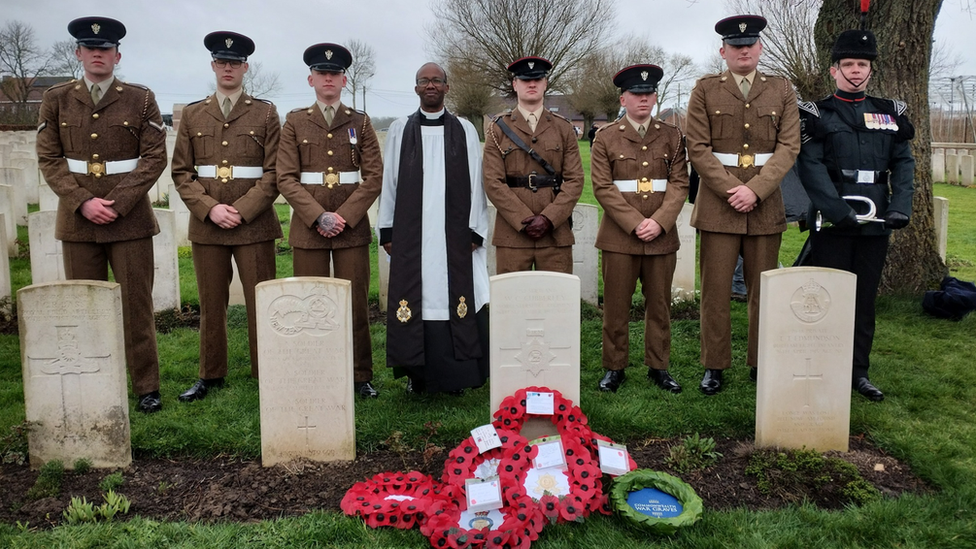
Serving soldiers of the 1st Battalion The Mercian Regiment helped rededicate a new headstone
After a five-year search, the Ministry of Defence has identified an unknown soldier killed in World War One.
The soldier's remains were found near Ypres, Belgium, in 2012 by workmen laying pipes.
The only immediate clues were his Worcestershire Regiment uniform, which also identified his rank.
DNA evidence was used to locate his descendants and a service of rededication has been held for Serjeant William Clay Cubberley.
His great nephew, John Cubberley from Dudley, said: "It was a relief for my grandfather because he was always upset that they couldn't find Bill."
"It's absolutely lovely to know that you're part of a big regimental family," he added.
After unsuccessful DNA testing, the remains of 28-year-old Sjt Cubberley were initially reburied in September 2017 as an "unknown soldier" of the Worcestershire Regiment.
But after delays caused by the coronavirus pandemic, Rosie Barron from the MoD's Joint Casualty and Compassionate Centre took another look at the case, with the help of Belgian archaeologist, Simon Verdegem.
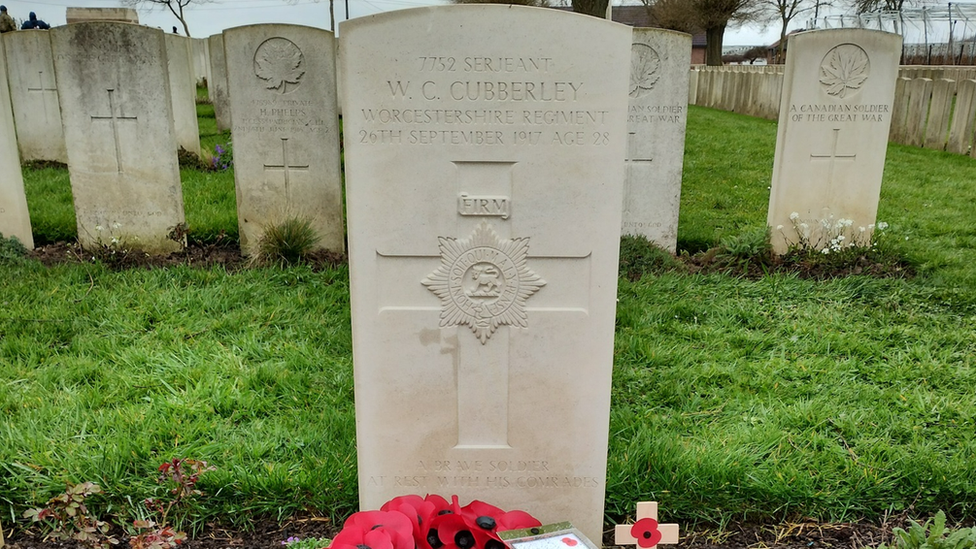
A new headstone, bearing the name of Sjt William Cubberley, has been erected
At first it was thought he was a Company Serjeant Major, but after finding none had died in that area, she decided to trace the families of three missing Serjeants (the spelling of Sergeant used by regiment).
The families of all three men were asked to share DNA, and John Cubberley proved to be a match.
Ms Barron said she was "very pleased to have given Sjt Cubberley his name back".
"His story is now complete," she added.
A service involving serving soldiers from The Mercian Regiment was held on 22 March to rededicate his grave, with his name included.
The MoD research team was also able to give the family a more complete picture of how he died.
It found he was killed during German shelling of the Battalion HQ on 26 September 1917.
Battalion records from the time noted: "The whole ground was churned up, even the bodies of the killed soon disappeared."
The MoD added 48 men serving with 2nd Battalion The Worcestershire Regiment at the same time were still missing and are commemorated on the Tyne Cot Memorial.

Follow BBC West Midlands on Facebook, external, Twitter, external and Instagram, external. Send your story ideas to: newsonline.westmidlands@bbc.co.uk, external
Related topics
- Published6 November 2022
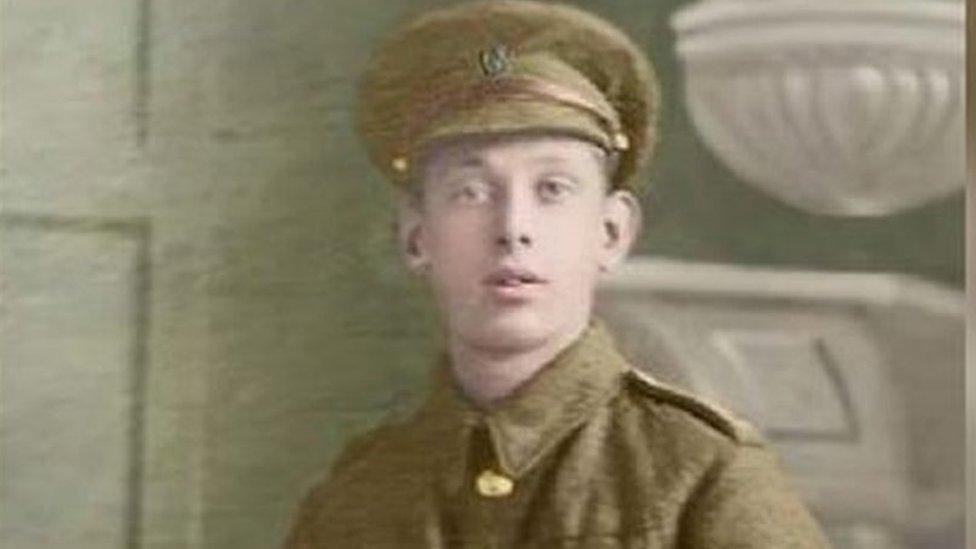
- Published3 October 2022
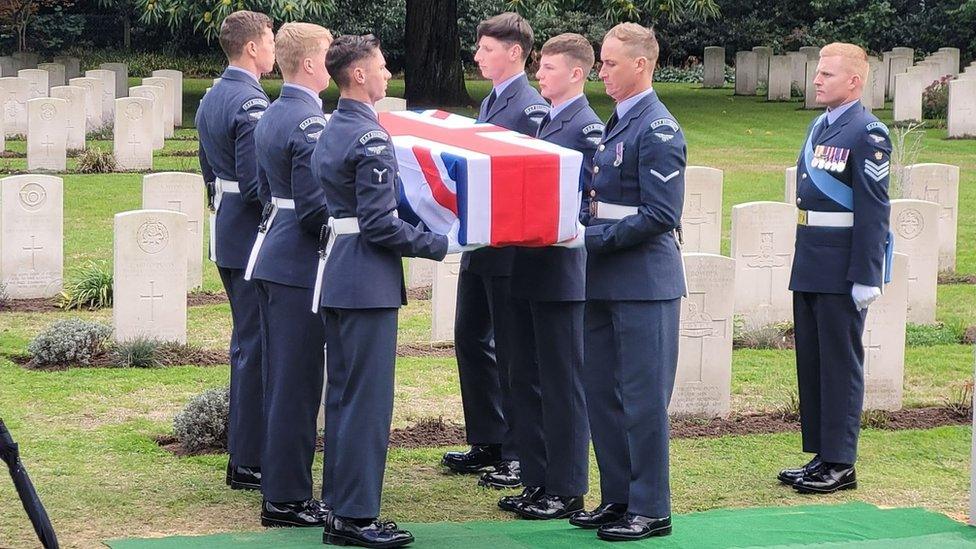
- Published10 March 2022
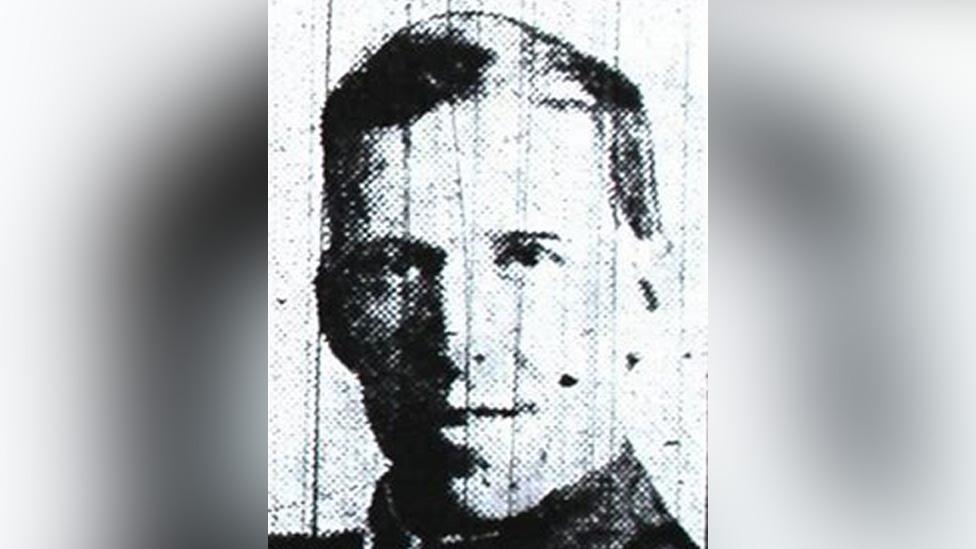
- Published11 November 2021
